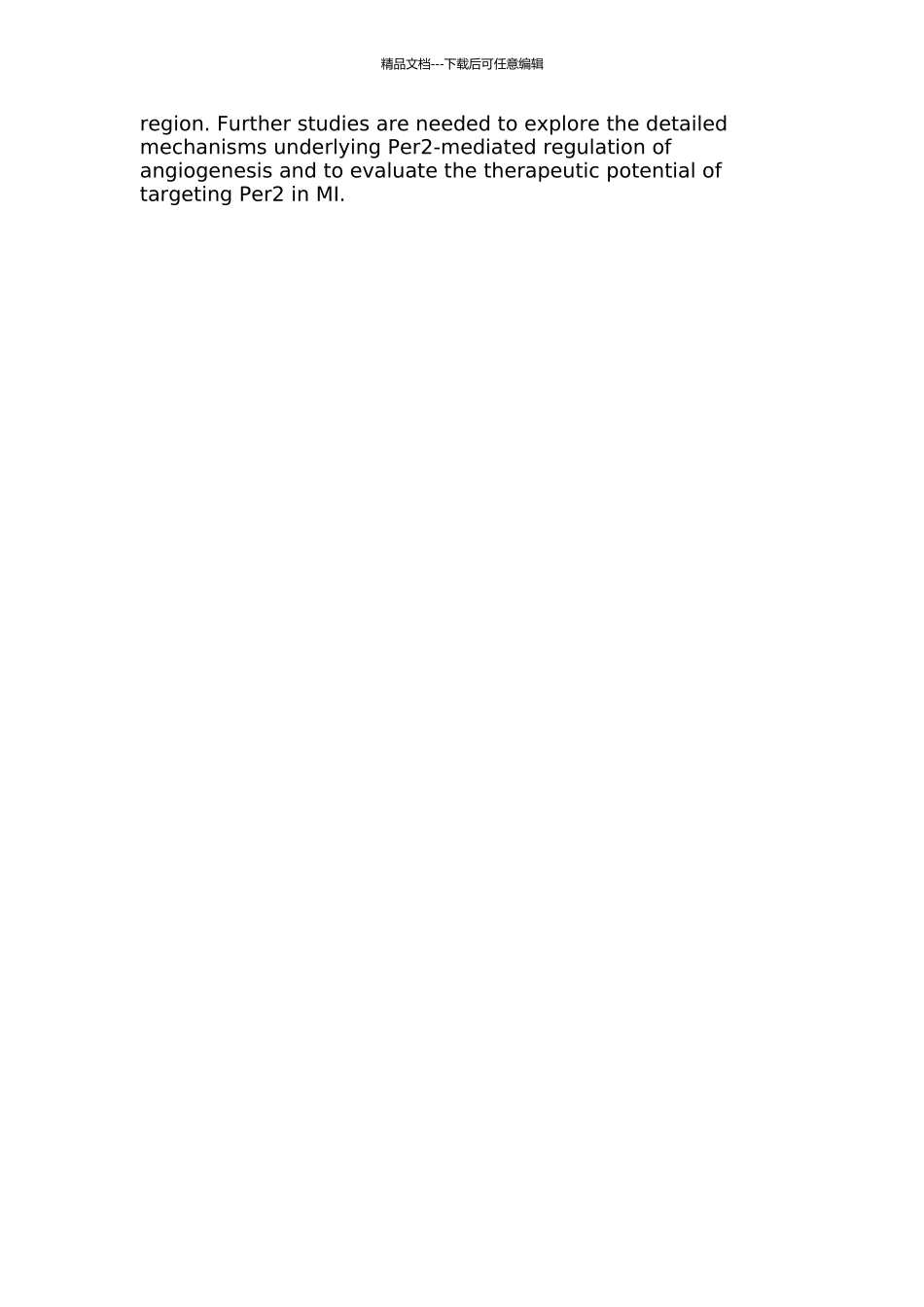精品文档---下载后可任意编辑Period2 调节小鼠心肌梗死后血管新生的作用及机制讨论中期报告AbstractMyocardial infarction (MI) is a common cardiovascular disease that often leads to heart failure and death. Vascular endothelial growth factor (VEGF) plays a crucial role in promoting angiogenesis and maintaining cardiac function after MI. Period2 (Per2) is a circadian clock gene that regulates diverse biological processes, including endothelial cell function. However, the role of Per2 in post-MI angiogenesis remains unclear. In the present study, we aim to investigate the effect of Per2 on post-MI angiogenesis and explore the underlying mechanisms.MethodsAdult male Per2 knockout (KO) mice and wild-type (WT) littermates were subjected to left anterior descending coronary artery ligation to induce MI. Cardiac function was assessed by echocardiography. Histological examination was performed on heart tissue sections to evaluate infarct size and vascular density. The expression levels of VEGF and other angiogenic factors were measured by real-time PCR and Western blotting. Endothelial cell-specific markers were used to identify angiogenic cells in the infarct region.ResultsPreliminary data showed that Per2 KO mice exhibited exacerbated cardiac dysfunction and increased infarct size, accompanied by reduced vascular density in the infarct area, compared with WT mice after MI. Real-time PCR and Western blotting analyses revealed decreased VEGF and other angiogenic factors expression in Per2 KO mice compared with WT mice. Immunofluorescence staining showed that the number of angiogenic cells was reduced in Per2 KO mice, indicating impaired angiogenesis.ConclusionsThese findings suggest that Per2 plays an important role in post-MI angiogenesis by regulating VEGF expression and promoting the recruitment of angiogenic cells to the infarct 精品文档---下载后可任意编辑region. Further studies are needed to explore the detailed mechanisms underlying Per2-mediated regulation of angiogenesis and to evaluate the therapeutic potential of targeting Per2 in MI.

